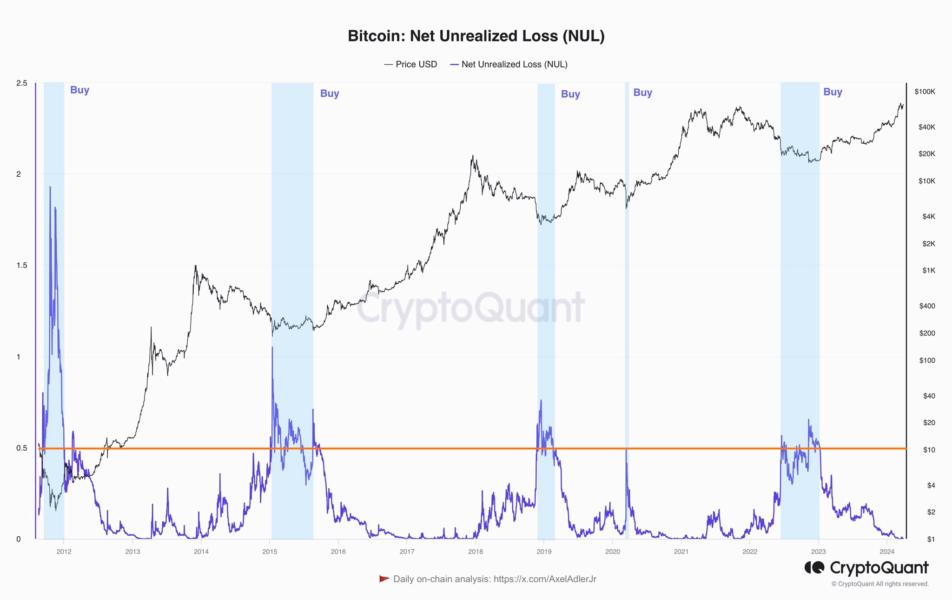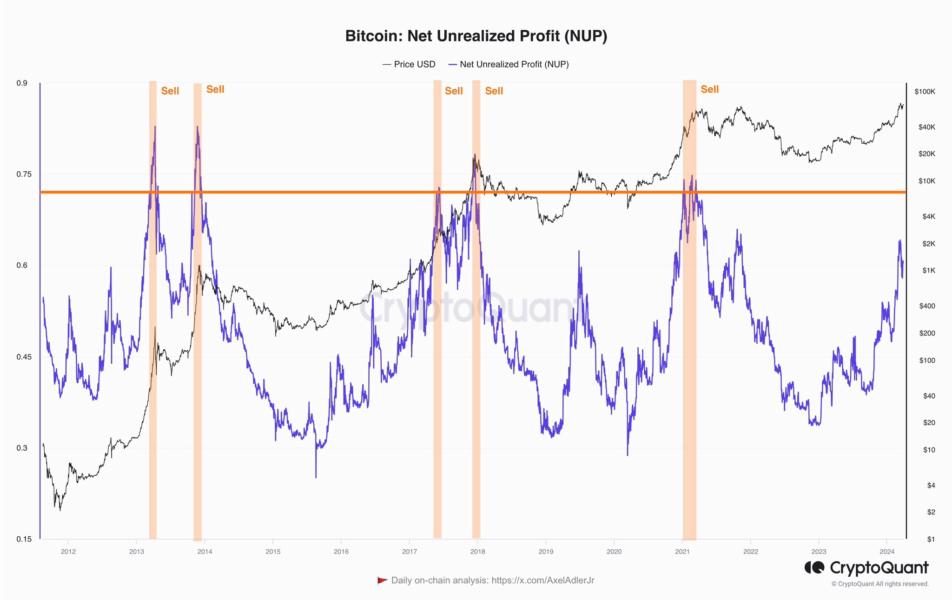- Bitcoin’s price action may be guided by two on-chain indicators, Net Unrealized Profit (NUP) and Net Unrealized Loss (NUL).
- Historically, NUL breaking above 0.5 has signaled potential buying opportunities, especially during bear markets.
- “It remains to be seen, though, whether these patterns will continue to hold in the current Bitcoin cycle as well,” cautions the analyst.
Discover a potential Bitcoin trading strategy based on historical trends in key on-chain metrics. Learn when to buy and sell according to expert analysis.
Bitcoin Buying and Selling Strategy: What the Indicators Say
An in-depth analysis suggests that Bitcoin’s price movements could be influenced by two on-chain indicators: Net Unrealized Loss (NUL) and Net Unrealized Profit (NUP). These metrics reveal trends in investor sentiment and may signal opportune moments for buying or selling the leading cryptocurrency.
Understanding NUL and NUP
NUL and NUP track the unrealized profit or loss held by Bitcoin investors. By analyzing the transaction history of each coin, these indicators determine its cost basis (the price at which it was last acquired). If the current price exceeds the cost basis, the coin holds an unrealized profit (NUP). Conversely, if the current price is lower, it represents an unrealized loss (NUL).
Historical Patterns and Strategy
According to CryptoQuant author Axel Adler Jr., NUL breaking above the 0.5 level has historically coincided with bear market lows, suggesting potential buying opportunities. Conversely, NUP surpassing 0.7 may indicate market tops and favorable conditions for selling.
A Word of Caution
While these indicators have shown correlation with past price trends, they do not perfectly predict tops or bottoms. Additionally, their efficacy in the current Bitcoin cycle remains to be fully tested.
Conclusion
The analysis of NUL and NUP offers a potential framework for a simple Bitcoin trading strategy. By monitoring these on-chain indicators, investors may gain insights into prevailing market sentiment and make more informed decisions about buying or selling. However, it’s crucial to remember that past performance is not indicative of future results, and this strategy should be used in conjunction with other technical and fundamental analysis tools.


